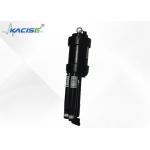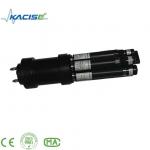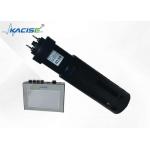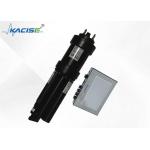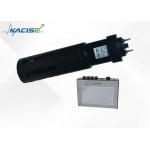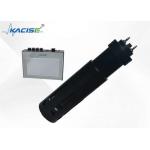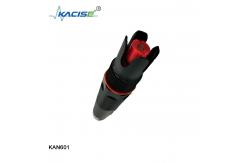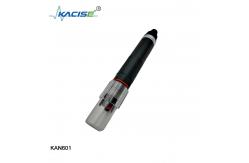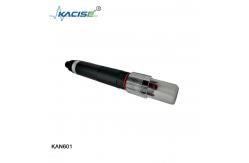Ip68 4~20mA RS485 Ammonia Nitrogen Sensor For Water Quality
Kacise KAN601 Online Ammonia Nitrogen Sensor Patented Probe IP68
Protection Level Easy To Install: 3/4 NPT Thread
KAN601 Online Ammonia Nitrogen Sensor
Application Environment
KAN601 integrated online ammonia nitrogen sensor is fabricated
using a PVC membrane-based ammonium ion-selective electrode for
testing ammonium ion content in water with temperature compensation
to ensure fast, simple, accurate, and economical testing. The
technical parameters, maintenance, and communication protocols of
the ammonia nitrogen sensor are described in detail in this user
manual.
- Signal output: RS-485 bus, Modbus/RTU protocol, convenient to
connect to PLC, DCS, industrial control computer, general
controller, paperless recording instrument or touch screen, and
other third-party equipment.
- In the patented ammonium ion probe, the internal reference solution
oozes extremely slowly from the microporous salt bridge at a
pressure of at least 100 KPa (1 Bar). Such a reference system is
very stable and has a longer electrode life than conventional
industrial electrodes.
- Easy to install: 3/4 NPT thread (pipe thread) for easy submersible
installation or installation in pipes and tanks.
- IP68 protection level.
| Model | KAN601 |
| Measuring range | 0~10.00mg/L(0~100.00mg/L) |
| Resolution | 0.1mg/L |
| Accuracy | ±10% or ±1mg/L |
| Working temperature | 0~40℃ |
| Working pressure | <0.1MPa |
| Medium PH range | 4~10 pH |
| Temperature compensation | Temperature compensation (Pt1000) |
| Power supply | 12~24 VDC ±10% |
| Signal output | RS-485 bus, Modbus/RTU protocol |
| Wetted material | PVC and POM |
| Installation | 3/4NPT thread, immersion installation |
| Cable length | 5 meters, other lengths can be customized |
| Calibration | Two-point calibration |
| Power consumption | <0.3W@12V |
| Protection grade | IP68 |
Dimensional Drawing
Tip: Do you know this method for determining ammonia nitrogen?
Ammonia gas sensing electrode method:
The ammonia gas sensor is a composite electrode, with a pH glass
electrode as an indicator electrode and a silver-silver chloride
electrode as a reference electrode. This electrode pair is placed
in a plastic sleeve filled with 0.1mol/L ammonium chloride inner
liquid. The end of the tube is fitted with a hydrophobic
semi-permeable membrane close to the sensitive membrane of the
indicator electrode to separate the inner electrolyte from the
outer test solution. Semi-permeable membrane, there is a very thin
membrane between the pH glass electrode. When a strong alkali
solution is added to the water sample to increase the pH to above
11, the ammonium salt is converted into ammonia. The generated
ammonia passes through the semi-permeable membrane due to diffusion
(water and other ions cannot pass through), making the ammonium
chloride electrolyte membrane layer NH3+H2O=NH4++OH- The reaction
moves to the right, causing the hydroxide ion concentration to
change. The change is measured by a pH glass electrode. The
electromotive force measured under a constant ionic strength is the
logarithm of the ammonia nitrogen concentration in the water
sample.
Contact Us
Website www.kacise.com
Phone +86-17719566736
Email sales@kacise.com
Location Tangyan South Road, High-tech Zone, Xi'an City, Shaanxi
Province, China
